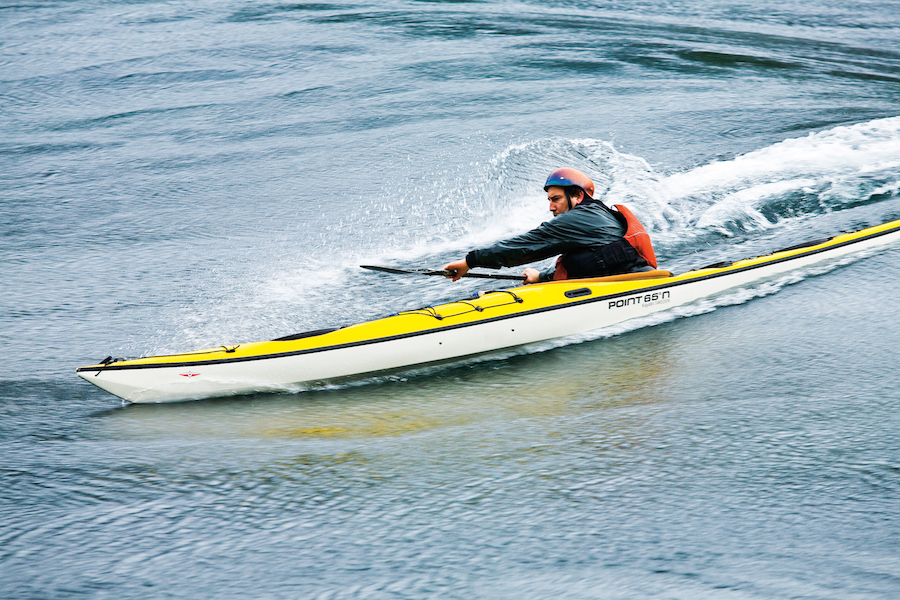If you’re a novice kayaker, this is one of the best questions you can ask and understand because it is directly related to your safety. I’ve been on hundreds of kayaking trips over the last two decades: quite a few solo ones, a few with my husband, and some overnight kayaking and camping trips where we loaded our kayaks for overnight camping.
In this article, I will answer all the questions regarding weight limitations for various types of kayaks and please understand that when I answer weight capacity questions, the weight includes your body weight plus any additional gear or equipment you are loading.
What is the Weight Capacity of a Single Person Hardshell Kayak?

The average weight capacity of a single person hardshell kayak is between 250 – 500 lbs.
What is the Weight Capacity of a Single Person Inflatable Kayak?

The capacity of a single person inflatable kayak is between 250 – 400 lbs. Inflatable kayaks have slightly lower weight capacities than hard shells due to the fact that they are made with air-filled chambers instead of solid hulls.
What is the Weight Capacity of a Tandem Hardshell Kayak?

The average weight capacity of a tandem hardshell kayak is between 600 – 700 lbs which include both paddlers and their equipment.
What is the Weight Capacity of a Tandem Inflatable Kayak?

The average weight capacity of a tandem inflatable kayak is between 500 – 600 pounds which includes both paddlers and their equipment.
What is the Weight Capacity of a Touring Kayak?

The average weight capacity of a touring kayak is between 600 – 800 lbs.
Touring kayaks are usually designed to carry heavier loads than recreational kayaks due to the larger surface area, keel design, and other features which make them better suited for longer excursions.
What is the Weight Capacity of a Fishing Kayak?

The average weight capacity of a fishing kayak is between 400 – 600 lbs which includes both the paddler and their gear.
Fishing kayaks are usually designed to carry heavier loads than recreational kayaks due to additional storage space for tackle boxes, bait buckets, ice chests, etc.
What Affects the Weight Capacity of a Kayak?

The weight capacity of a kayak is determined by several factors including the size and material of the kayak and the type of kayaking you plan to do.
Sit-on-top kayaks tend to have higher weight capacities than sit-in kayaks of the same size while inflatable kayaks may have lower weight limits than hard-shell kayaks.
Check the Manufacturer’s Specs Before Purchasing
Before you purchase a kayak, I advise you should check the manufacturer’s specifications for maximum weight capacity.
These limits are designed to ensure your safety while kayaking by preventing the kayak from becoming unstable or sinking due to overloading.
Always choose a kayak that has a weight limit that is greater than your body weight plus any additional gear you plan to carry. This is one safety issue you don’t want to compromise on!
Other Factors That You Need to Consider
It’s essential to note that the weight of the kayaker is not the only factor that determines the maximum load capacity of a kayak.
As mentioned earlier, the equipment and gear you carry also contribute to the overall weight. You should always pack essentials including personal flotation devices, paddles, and any necessary safety gear.
It’s also vital to distribute the weight evenly in the kayak to avoid overloading one side of the kayak, which can make it unstable.
Keep in mind that the weight capacity is there to keep you safe but if you feel uneasy with too much weight in the kayak, go ahead and reduce the load to a more comfortable level.
What is the 70 Percent Rule?
The 70 percent rule is a general guideline stating that you should never load your kayak to more than 70 percent of its maximum weight capacity. This means that if your kayak has an overall weight capacity of 500 lbs, the most you should have on board is 350 lbs.
By following this rule, you can ensure that your kayak remains stable and safe while you’re out on the water.
It’s also important to remember that this rule applies to both single and tandem kayaks, so always make sure to check the weight capacity of your specific kayak before loading up.
I go by this rule wholeheartedly especially when I go out on solo trips.
Will a Kayak Sink If You’re Over the Weight Limit?
Yes, if you exceed the weight limit of your kayak, it will start to sink; you’ll notice the buoyance level go down as well.
You would really have to push the weight limit on a kayak for this to happen though and if you follow the 70% rule stated above, you’ll be fine.
It’s important to remember that a kayak is designed for a certain amount of weight and any more than that can be dangerous or cause the vessel to become unstable and sink.
What Size Kayak Do I Need If I Weigh 300 Pounds?
If you weigh 300 pounds, you will need a kayak that has a minimum weight capacity of 400 lbs. This should provide enough floatation for your body weight and any additional gear or equipment that you plan to carry.
Inflatable and sit-on-top kayaks tend to have higher weight capacities than hardshell or sit-in kayaks, so these may be a better option if you are looking for something that can handle your body weight.
Summary
Understanding how much weight a kayak can hold is crucial for both your safety and enjoyment while kayaking. By considering factors such as the kayak type, size, material, and the weight of your equipment and gear, you can determine the maximum weight capacity of your kayak.
Remember to follow the 70 percent rule and you’ll be okay!
